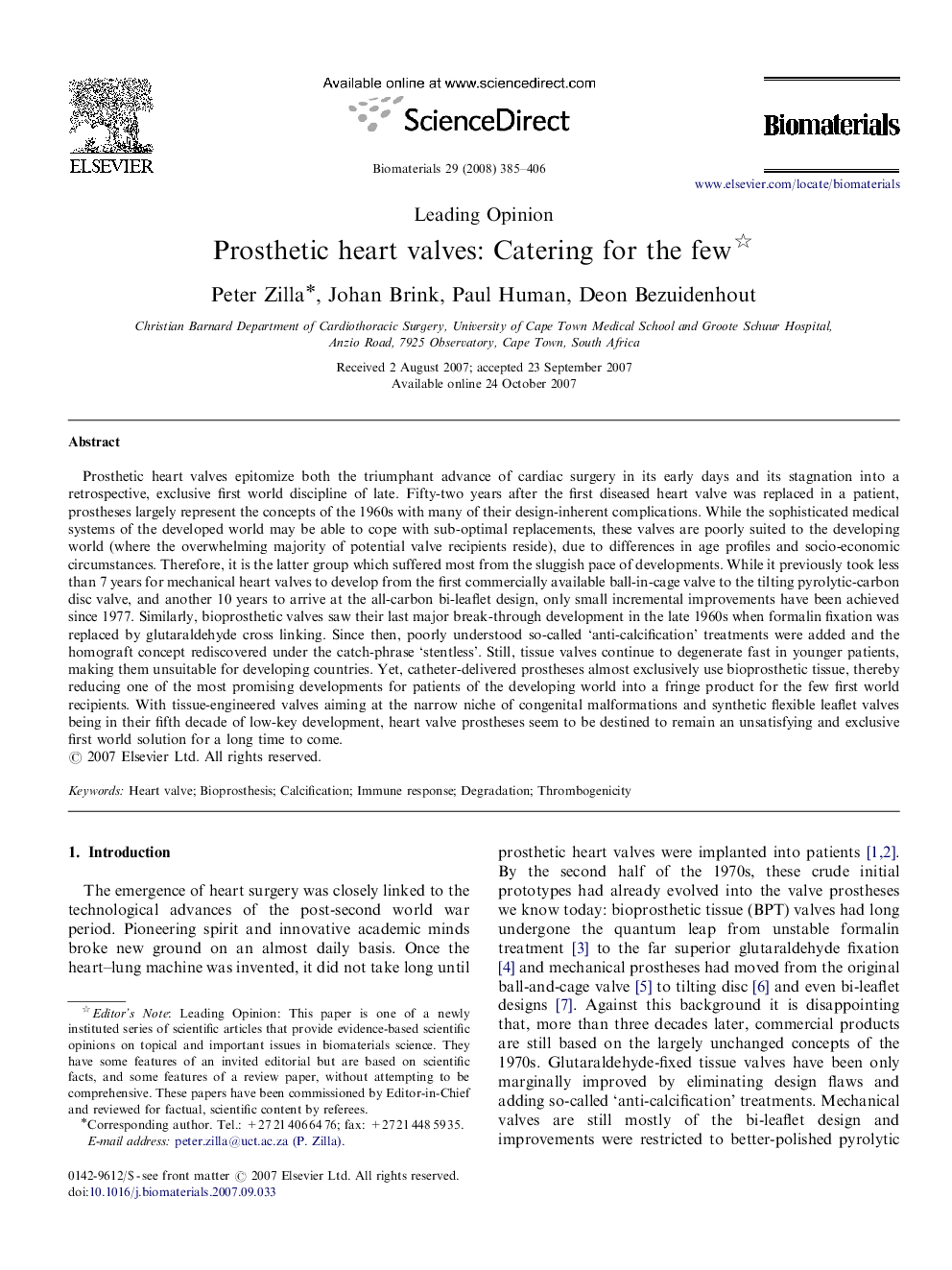| Article ID | Journal | Published Year | Pages | File Type |
|---|---|---|---|---|
| 10106 | Biomaterials | 2008 | 22 Pages |
Prosthetic heart valves epitomize both the triumphant advance of cardiac surgery in its early days and its stagnation into a retrospective, exclusive first world discipline of late. Fifty-two years after the first diseased heart valve was replaced in a patient, prostheses largely represent the concepts of the 1960s with many of their design-inherent complications. While the sophisticated medical systems of the developed world may be able to cope with sub-optimal replacements, these valves are poorly suited to the developing world (where the overwhelming majority of potential valve recipients reside), due to differences in age profiles and socio-economic circumstances. Therefore, it is the latter group which suffered most from the sluggish pace of developments. While it previously took less than 7 years for mechanical heart valves to develop from the first commercially available ball-in-cage valve to the tilting pyrolytic-carbon disc valve, and another 10 years to arrive at the all-carbon bi-leaflet design, only small incremental improvements have been achieved since 1977. Similarly, bioprosthetic valves saw their last major break-through development in the late 1960s when formalin fixation was replaced by glutaraldehyde cross linking. Since then, poorly understood so-called ‘anti-calcification’ treatments were added and the homograft concept rediscovered under the catch-phrase ‘stentless’. Still, tissue valves continue to degenerate fast in younger patients, making them unsuitable for developing countries. Yet, catheter-delivered prostheses almost exclusively use bioprosthetic tissue, thereby reducing one of the most promising developments for patients of the developing world into a fringe product for the few first world recipients. With tissue-engineered valves aiming at the narrow niche of congenital malformations and synthetic flexible leaflet valves being in their fifth decade of low-key development, heart valve prostheses seem to be destined to remain an unsatisfying and exclusive first world solution for a long time to come.
